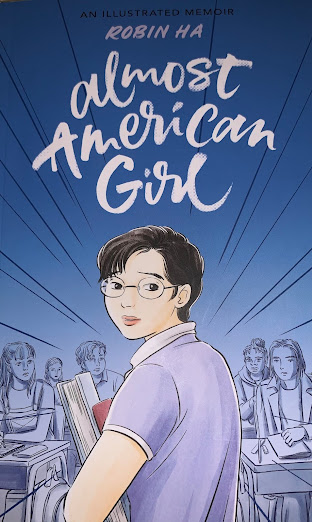SPIRIT SLEUTHS: How Magicians and Detectives Exposed the Ghost Hoaxes
Spirit Sleuths: How Magicians and Detectives Exposed the Ghost Hoaxes by Gail Jarrow
Reviewed by Brooklyn Cameron, Kayla Cortez, Justin Wong Benavidez, and Marcus Adams
Review:
Gail Jarrow’s Spirit Sleuths: How Magicians and Detectives Exposed the Ghost Hoaxes focuses on the spiritualism movement of the 19th and 20th century. This included mediums, hoaxes, seances, and magic. The whole movement was started by the two Fox sisters. Margaretta and Catharine Fox were able to trick and scam customers into believing that seances and communicating with spirits were real. They did this by having people pay to hear ghost communications through rapping noises that occurred during sessions. This era came at a time where Spiritualism was needed, as there were lots of families needing to communicate with deceased loved ones at the time. Jarrow then heavily focuses on Harry Houdini, a famous escape artist and magician, and his relationship with Arthur Conan Doyle, the creator of Sherlock Holmes. Houdini was very determined to debunk the hoaxes behind spiritualism, but Doyle and his wife were very determined to convince him that it was real. Houdini’s determination created a estrangement to his relationship with Doyle in the long run since they disagreed on whether spiritualism was real or not. Houdini then began to work with Rose Mackenberg, who served him as an undercover female detective to debunk people who were fraud mediums all over the world. Nothing they had seen over the years had proved that mediums were real, though they may exist in our life, Houdini and Mackenberg had not witnessed a true medium in their lifetime.
What is most striking in Spirit Sleuths was that Jarrow speaks on the allure of spiritualism and how deceit and deception can be used in a humanistic approach. She is able to emphasize the desire of these customers who are fueled by grief to find any type of religion in their situation. The societal impact that spiritualism left was a comfort that not only offered hope but closure after death. Jarrow delves into many methods mediums were able to use to deceive those who were grieving; she also provided pricing on these services that were conned by a wide variety of individuals. The many contraptions and seances only provided further proof that money was able to continuously fund their hoax.
By providing history behind the many methods of spiritual deceit, the book is able to provide an opportunity to explore themes of critical thinking on skepticism with a connection between reality and spiritualism. Though spiritualism is something commonly talked about through history, we can use the evidence and Jarrows claims to further evaluate fact from fiction. The novel is able to provide young readers the ability to make their own connections between certain beliefs and critically analyze the history of skeptics in the past. By following the detective's investigations in the novel, we are able to apply these critical thinking skills to connect them to logic and reasoning. Not only was this an important era, but it was a large media event with important individuals like the president, Doyle, and many more. By examining the way the media supported public figures' point of views, we are able to examine how the media can be manipulated to personal belief systems.
Biography:
Gail Jarrow, born on November 29, 1952, in Dallas, Texas, is a well-known American author who specializes in nonfiction and novels for young readers ages 8 to 18. She graduated from Duke University with a Bachelor of Arts in 1974 and Dartmouth College with a Master of Arts in 1980. Numerous honors have been bestowed upon her writings, such as the Orbis Pictus Honor, the Robert F. Sibert Honor Book Award, and the YALSA Award for Excellence in Nonfiction. “Spirit Sleuths: How Magicians and Detectives Exposed the Ghost Hoaxes,” published in September 2024, is one of her noteworthy works. It explores how individuals such as Harry Houdini disproved fraudulent mediums in the early 1900s. Because of her commitment to thorough research and captivating storytelling, Jarrow is very well-known in children’s nonfiction literature and currently resides in Ithaca, New York.
Instructional Resources:
1. Gail Jarrow's BibliographyThis website provides a complete list of all of Gail Jarrow’s novels as well as short summaries of each book. The website also contains information about Jarrow.
Instructional Activity:
Grade Level: 11-12
Subject: History
Duration: Two Class Periods (60 minutes each)
Preview:
By the end of this lesson, students will use textual evidence from primary and secondary sources to investigate a historical event and compare differing perspectives on historical events.
Copy of Spirit Sleuths by Gail Jarrow
Excerpts of primary sources from the text (Click here for primary source)
Graphic organizer handouts for group analysis
Chart paper for group presentations
Instructional Plan:
- Present "History's Most Fascinating Siblings" video (6:50-12:55) Video Link
- Question for Discussion: "How can forensic evidence change our understanding of history?"
- Students brainstorm answers in small groups and share with the class
- Divide the class into small groups of 4-5 students. Each group receives:
- Secondary Source: A copy of Spirit Sleuths, focusing on pages 71-84.
- Primary Source: An excerpt from Houdini's "'Margery' The Medium Exposed".
- A graphic organizer worksheet to guide their analysis.
- Analyze the sources and fill out the worksheet
- Reconnect with your group to create a 2-4 minute presentation on the chart paper including:
- An evaluation of the case (Do you agree with Houdini's findings considering the historical context of the case? Why or why not?).
- At least 1 quote from the primary or secondary source to support this evaluation.
- Each group presents their findings to another groups in the class.
- Half of the groups present while the other half rotates (5 minutes for each presentation).
- Switch which groups are presenting after all of the first half of groups has presented.






